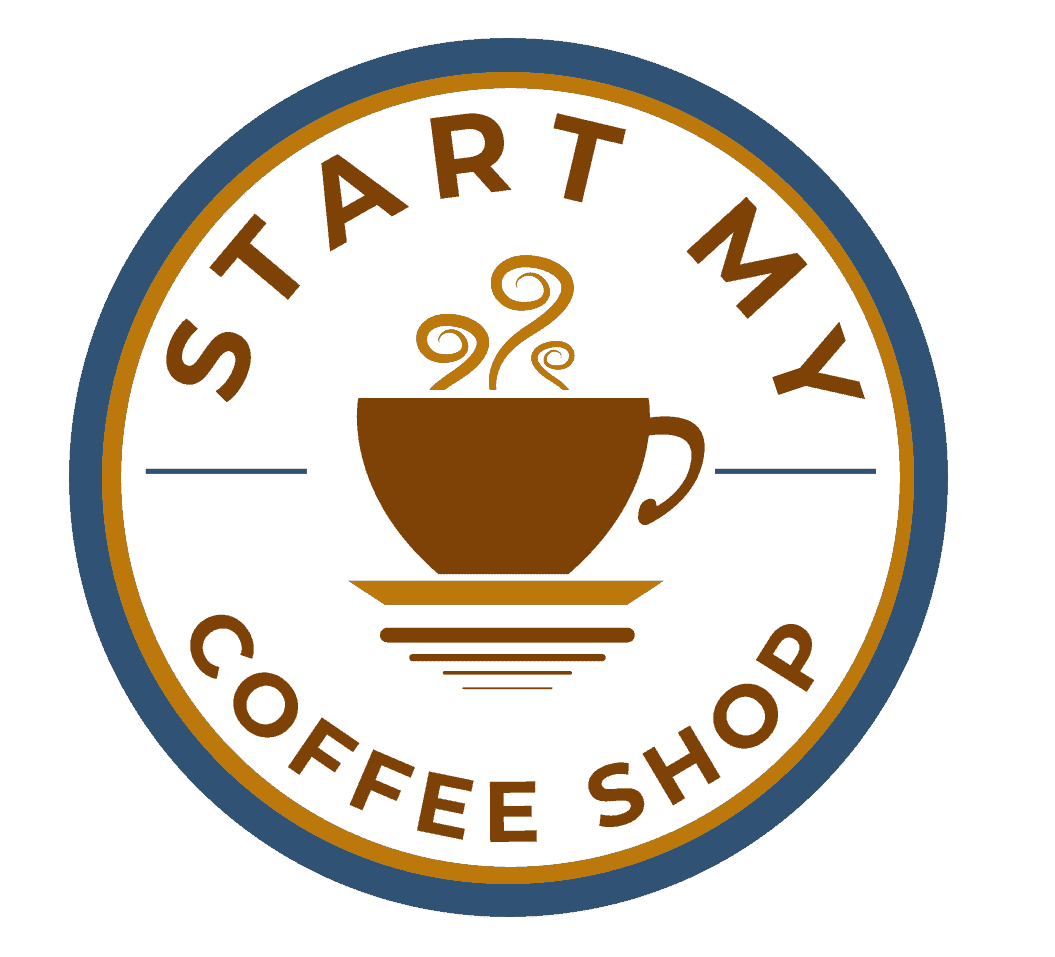If you are like most Americans, your first thought in the morning comes to rest upon a cup of coffee. Living in the age of constant hustle and bustle probably means slugging down more than just the French press that you made at home while getting ready for work in the morning. As I stand in line amongst countless others, all awaiting that deep brown boost of energy I often wonder: how many cups of coffee are being sold at this coffee house per day?
According to the National Coffee Association an independent coffee shop can sell roughly 200-300 cups per day, whereas a large chain coffee shop can sell an astounding 700 cups of coffee per day!
Listed below are some of the key factors that contribute to these sales numbers and the gap between branded coffee shops and their mom-and-pop counterparts.
Key Factors Contributing To Cups Of Coffee Sold Per Day
Location, Location, Location
The cold weather states of the Pacific Northwest and Midwest sell more coffee per capita than the warmer regions of the South and West Coast, with their capital cities accounting for the highest consumption per person (e-importz.com).
Consumers in major cities around the country are generally more prone to higher coffee consumption in comparison to their small town counterparts. Still, the “vibe” or ambience of the shop in relation to the specific neighborhood it is located in also plays a role in that shop’s ability to sell more cups of coffee. For instance, a hip cold-brew-specialized shop in Madison Wisconsin may not be as popular as the Dunkin’ Donuts down the street. But if you open that exact same cold brew shop in San Diego or Seattle, you may enjoy a healthy amount of business in those locations.
Big Chain vs. Local

In recent years, business at large coffee retailers has begun to give way to smaller mom-and-pop shops all over the country. Although 60% of American coffee drinkers say they visit a branded coffee shop at least once a month (Beverage Daily), consumers have begun to gravitate towards boutique coffee shops for several reasons that ultimately affect how much coffee is being sold at each.
Statistics from the National Coffee Association show that 53% of coffee drinkers now choose to purchase their morning java from smaller retailers that either are environmentally conscious in their business practices or that support the coffee farmers from whom they purchase beans. Though that means that nearly half of all consumers (47%) don’t take either of these factors into account when making their purchase, the aging millennial population has and will continue to drive conscientious coffee-buying trends causing the gap in that statistic to grow even further.
Flavor Revolution
In the food or beverage world, flavor plays a huge role in driving sales for any given item, coffee included. In fact, statista.com has reported that upwards of 42.9% of consumers chose their coffee for the flavor! Supporting data from The National Coffee Association also reports that the number of people only adding milk to their morning cup of joe has risen by 66% since 2015, which suggests that the individual characteristics of the coffee have become more coveted than the countless flavorings on offer.
Smaller local coffee bean roasters have begun to spring up throughout the country, offering their neighborhood shops a taste of something unique that can’t be easily found at the nearest city intersection. These local roasters have turned boutique coffee shops into flavor destinations for a new generation of java drinkers. These coffee lovers are moving away from drinks which mask the bitter complexity of their roasts with syrups and whipped cream, and instead celebrate the inherent characteristics of the coffee itself.
Demographics Of Change
Think back to your first taste of coffee. How old were you and how bitter or cloyingly sweet was the taste? Many people have had different experiences with coffee at different points in their life, and coffee sales statistics by age demographic reflect this idea.
Over the past several years coffee consumption in the age group of 18-24 has slowly, but surely, been on the rise. One study done by the University of Kentucky concluded that a whopping 78% of college freshmen consume well above the recommended 200 mg of caffeine per day, citing that both coffee and energy drinks were the culprits behind the high caffeine consumption. Furthermore, the study went on to report that college students were spending, on average, $92.70 per month on coffee from branded coffee shops such as Starbucks; a dramatic statistic when compared to the average amount of money spent on food, $163 per month according to the USDA.
All in all, this data only adds up to about 47% of adults between the ages of 18-24 that consume coffee, compared to a staggering 72% of adults over 60 (dailycoffeenews.com)! In large part, this is due to factors which include: disposable income, amount of leisure time, and the perceived health benefits of mild, daily coffee consumption. Though for different reasons, these two age groups are directly contributing to coffee shops’ ability to sell more cups of coffee across the country.
Emphasis On The Service

As in any consumer based business, the overall service at any given shop is of great importance to the customer. Not only does the quality and flavor of the cup of coffee matter, but the greeting at the counter, the fluidity of production and the exchange at the end; all these elements play a role in repeat business resulting in selling more cups of coffee.
For some, ordering a cup of coffee can turn into a daunting experience after listening to the person in front of them ramble off a “venti double caf maccia-cino, white, soy milk with 7 pumps and skim whip.” The ability to assist a guest in navigating the verbiage alone is an endearing character trait in a barista. Then, to effectively translate the order from guest to coworker is something else entirely. The final transfer of the end product in correct form and in under 5 minutes, complemented with a farewell greeting; this is the magic of hospitality, and helps to ensure the chance of seeing that guest again the next day.
On the business side, the faster that a barista can get a guest from start to finish also gives them a leg up in the race to sell more cups of coffee on any given day.
Social Drinkers
Ah, the coffee date! Be it romantic or just a casual date with a friend, meeting at a coffee house has been a staple of social gatherings since the first coffee shop opened in Istanbul in 1475.
Historically, coffee houses have been the meeting place of choice for artists, musicians, movers and shakers. As time has gone by, they have become settings for first dates, impromptu work meetings and discussions amongst friends.
A poll done by OKCupid shows that a first date at a coffee shop is preferred over meeting at a bar. There are more than a few reasons to embrace the proverbial “boring” coffee date. The casual nature of the setting allows for an intimate conversation without any expectation other than a great cup of coffee and an equal conversation to match. No need to dress-up or worry about who picks up the check.
Whether meeting a friend or simply catching up with a coworker after a long couple of days, a coffee date can be just as intimate of a social gathering for friends as it is for potential partners. A place between work and home to relax and catch up. The coffee house or cafe allows us to slow down while still carrying on a stimulating conversation and getting an energy boost to boot!
There you have it! Coffee shops across the country are selling hundreds of cups of coffee each day to eager consumers. Some of the key factors involved in how many cups of coffee can be sold in a day include the location of the shop, the style and quality of service, flavor and uniqueness of the coffee itself, age demographic in the vicinity of the shop, size and brand power of the coffee shop and its propensity for social gatherings. Cheers to your next cup of joe!
To learn more about what makes a coffee shop successful, click here.
Frequently Asked Questions
Anywhere from 4 pounds to 40 pounds depending on size and flow of business. One pound of whole beans equates to roughly 48 six-ounce
Green coffee beans lose 15-20% of their weight when they are roasted. One pound (16 ounces) of green coffee beans produces about 13 ounces of roasted finished product.
There are almost 36,000 coffee shops are registered for business in the U.S.
To learn more on how to start your own coffee shop checkout my startup documents here
Please note: This blog post is for educational purposes only and does not constitute legal advice. Please consult a legal expert to address your specific needs.

Hi! I’m Shawn Chun
My adventure in coffee began when I first launched my first coffee shop back in the early 2000s. I had to figure out so many things on my own and to make it worse within 2 years of opening two large corporate coffee chains moved in just blocks away from me!
As I saw smaller and even some larger coffee shops in the neighborhood slowly lose customers to these giant coffee chains and slowly close up shop, I knew that I had to start getting creative…or go out of business.
I (like you may be) knew the coffee industry well. I could make the best latte art around and the foam on my caps was the fluffiest you have ever seen. I even had the best state-of-the-art 2 group digital Nuova Simonelli machine money could buy. But I knew that these things alone would not be enough to lure customers away from the name brand established coffee shops.
Eventually, through lots of trial and error as well as perseverance and creativity I did find a way to not only survive but also thrive in the coffee/espresso industry even while those corporate coffee chains stayed put. During those years I learned to adapt and always faced new challenges. It was not always easy, however, in the end, I was the sole survivor independent coffee shop within a 10-mile radius of my location. Just two corporate coffee chains and I were left after that year. All told the corporate coffee chains took down over 15 small independent coffee shops and kiosks and I was the last one standing and thriving.
Along the years I meet others with the same passion for coffee and I quickly learned that it is not only “how good a barista is” that makes a coffee shop successful, but the business side of coffee as well.
Hence why I started this website you are on now. To provide the tools and resources for up and coming coffee shop owners to gain that vital insight and knowledge on how to start a coffee shop successfully.
Stick around, browse through my helpful blog and resources and enjoy your stay! With lots of LATTE LOVE!
Shawn






